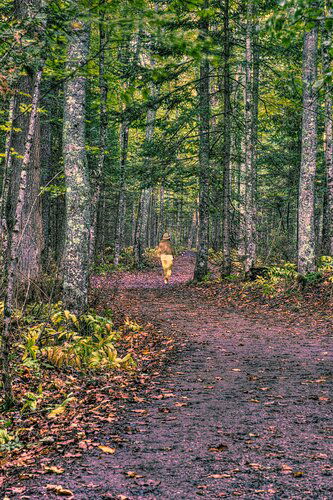Hi Roberta. I would be in general agreement with the comments that you have already received from @Kerry_Gordon and @Ed_Lowe I think you will find that many of of the participants in the Landscape Critique forum here are not big fans of aggressive HDR processing. Most of us here ascribe to the philosophy, “process for creative effect, but keep it believably realistic” For me it boils down to this, when I can easily tell by looking at an image what type of processing has been done to it, then it is less successful for me. I tend to lean towards a more subtle approach. Kerry has already pointed out some of the processing telltales that I also noticed.
With that said, in no way would I was want to discourage you from trying new processing techniques, and you did say this was an experiment. My own philosophy is that the images work better when they are more about the quality of light, the nature story, and the impact of visual design elements (such as shapes, lines, patterns colors, textures, etc). To me the image should be about these things, and the processing should enhance those elements. If an image does not have those things, then strong processing only goes so far on its own.
Breaking down this image from the viewpoint of things other than the processing, I see both pro’s and cons. I think you do a have a good story of the s-curve of the road leading into the woods. Compositing in the person adds to the story. And I think this image also works without the person, since the forest is interesting itself, it has some nice colors and shapes. On the other side of the ledger, to me there are some issues with sharpness and Depth of Field (DOF). I can see using shallow depth of field for the road in the immediate foreground, if your goal was to use that to emphasis the person in the middle of the road. But to me the yellow bushes on the left are an important element within the scene, and they are too out of focus for my taste. The leaves in the upper left corner are out of focus, and I find that to be a distraction as well. You used an aperture of f 5.0, I assume because you were trying for shallow DOF. I think you could have gone to a higher fstop, and got better sharpness in key elements like the yellow bush.
Processing should be a tool that is used for a specific purpose. Looking at the unprocessed bracket, the light looks very even and without harsh shadows, ie the kind of light you usually want when shooting in a forest. But this type of light also means that you don’t really need to us HDR to expand dynamic range, you can get a good exposure with with just one bracket. Sometimes HDR software like Topaz or Photomatix does some funky things to color, texture, saturation etc., in addition to creating a blended exposure from brackets. I think these are the things Kerry mentioned.
I guess my point is that you have the makings of a good photo here already, you did not need to goose it further with funky HDR processing to make it work. For example the saturation and colors in the unprocessed original look much more pleasing and natural to me. I’m not trying to be harsh here, or discourage you from experimentation. But while this type of heavy Topaz/Photomatix look might play well on Instagram, the tastes of many folks here at NPN tend to lean to a more natural look.

